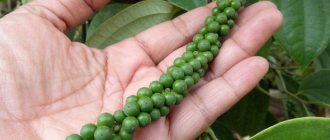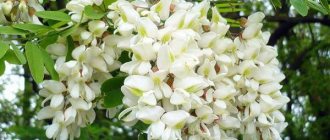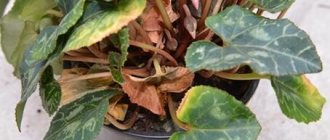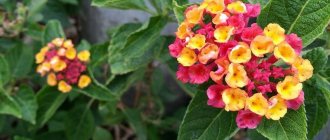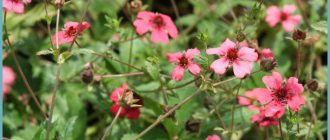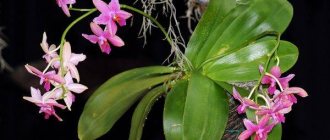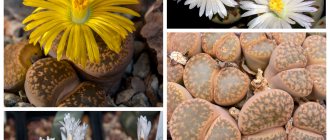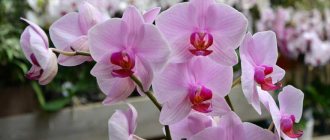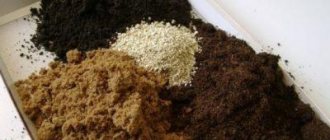Description of the plant
Yellow acacia is a shrub (sometimes a small tree) with butterfly yellow flowers. The fruits (they are also called beans) are pods up to 5 cm long. Yellow acacia, the seeds of which are in the pods, reproduces with their help. They look like small peas. In July, the pods ripen and dry on the tree. The fruit valves crack and the seeds scatter to the ground. These beans are edible; they are not inferior in fat, protein and carbohydrate content to peas, and they also taste like peas.
Yellow acacia (karagana) can grow up to seven meters in height, but in our country it is rarely higher than three. It is a low, multi-stemmed bush covered with greenish-gray bark.
Yellow acacia is a frost- and drought-resistant plant that perfectly adapts to city life. But it feels most comfortable on the shores of fresh water bodies. Widely distributed in Central Asia, the Far East, and Siberia. Caragana received its name from the Kyrgyz, and scientists left it as the official name. Translated, it means “black ear.” This is due to the fact that black-eared foxes live in the thickets of one of the varieties of caragana. There are about seventy species of this plant in the world, 6 of them are used for medicinal purposes.
Types of acacia photos with names
Curved Acacia - grows wild in South Wales. The plant is a shrub that reaches a height of up to 6 meters and has a spreading crown with a large number of long shoots with gray bark. The leaf blades are pinnate, dark green in color. The inflorescences are racemose, lush, white or yellow. Flowering time falls in mid-June, early July. After flowering, pods with saber-shaped, small beans inside are formed.
Leafless acacia - the crop grows up to 2.5 meters in height. Acacia shoots are numerous, dark green with small branches. The inflorescences are dark yellow in the form of small balls. They bear a slight resemblance to mimosa. Flowering time lasts from August to October. It grows in the wild in Australia.
Acacia Bailey - in the wild, acacia grows in America, Africa and Australia. The tree reaches a height of up to 5 meters and has a tent-shaped crown and a thick trunk with dark brown bark. The leaves are silvery-green, pinnate. The inflorescences are racemose, lemon-yellow with a pleasant aroma. Flowering time lasts from January to April. The seed pods ripen in August.
Acacia Double-veined - acacia can be represented as either a bush or a tree and reach up to 5 meters in height. The branches of the crop are thin and long with dense, dark green foliage. The inflorescences are white, small, round, resembling a mimosa in appearance. The crop blooms throughout the summer. After flowering, pod seeds with dark beans inside are formed.
Acacia Boxleaf - the height of the crop reaches up to 4 meters. It has thin long shoots with elliptical silver-green leaf plates, between which thin pedicels with round light yellow inflorescences appear. The plant blooms from mid-summer to mid-autumn. The seeds appear in late November and look like black bean pods.
Acacia Catechu is a branched tree reaching a height of up to 20 meters. The trunk is thick, covered with dark brown bark. The leaf blades are dark green and pinnate. Inflorescences are yellow, spike-shaped. The fruits are in the form of flattened pods with seeds inside. The flowering time of the crop is in the summer.
Acacia Mixed
The tree grows up to 15 meters in height. The branches of the culture are thin with long leaf blades, vaguely reminiscent of palm trees. The inflorescences are spike-shaped, with small yellow ball-shaped flowers. Flowering time lasts from mid-summer to early autumn. The seeds ripen in October.
White Acacia - the crop reaches a height of up to 25 meters and has a trunk diameter of up to 60 centimeters. The branches are long with dense, pinnate leaf blades of a silver-green hue. The inflorescences are racemose, drooping white in color with a pleasant aroma. The seeds are pod-shaped with small beans inside. Flowering time occurs in the first month of summer. The seeds ripen in September.
Acacia Yellow is a shrub that reaches a height of up to 6 meters and has dense light green, pinnate foliage. The inflorescences are light yellow, racemose with a pleasant persistent aroma. Flowering time is in June. The fruits in the form of pods ripen in September.
Acacia Silver - the crop can reach a height of up to 45 meters, while having a thick trunk with gray-brown bark. The leaf blades are bipinnate with slight pubescence of a silver-green hue. The inflorescences are paniculate, consisting of small yellow balls. Flowering time lasts from December to March. The fruits of the crop look like beans with seeds inside.
Umbrella Acacia - grows mainly in the African savanna. The tree reaches a height of up to 50 meters and has a dense, umbrella-shaped crown. The leaf blades are small, dark green in color. There are large thorns on the branches. The culture blooms with spike-shaped white or yellow inflorescences. Acacia fruits are presented in the form of beans with seeds inside.
Acacia Senegal - grows wild in India, Africa and Pakistan. It reaches a height of up to six meters. The branches are long and thin, covered with arched spines. The leaves are pinnate, dark green. The inflorescences are spike-shaped, white or yellow. The fruits are pods with black seeds inside.
Acacia Pink
The tree reaches a height of up to 10 meters. It has a dense, spreading crown and a medium-thick trunk with dense dark brown bark. The leaves are light green, odd-pinnate with rounded ends. The inflorescences are racemose, lush, bright pink with a pleasant aroma. The crop blooms in mid-summer. The pod-shaped seeds ripen in September.
Acacia Low-growing - the tree reaches a height of up to 18 meters and has a wide, spreading crown with a trunk with a diameter of up to 40 centimeters. The bark is rough, dark brown. The leaf blades are dark green, long, pinnate. The inflorescences are paniculate, yellow-lemon in color with a pleasant aroma. Flowering time lasts from June to August. The bean-shaped fruits ripen in September.
Acacia Farnese - grows wild in America, India, Syria and Hawaii. The culture is a shrub reaching a height of up to 6 meters with zigzag shoots with weak pubescence. The leaf blades are green, pinnate. The inflorescences are round, orange with a pleasant aroma. The crop blooms from October to December. The seeds ripen in March.
Acacia Longifolia - the tree reaches a height of up to 7 meters and has long shoots with brown bark. The leaf blades are dark green, elliptical with a pointed end. The inflorescences are pale yellow with a pleasant aroma. The flowering time of the crop is in the summer, and the seeds ripen in early autumn.
Black Acacia - the tree reaches a height of up to 1 meter. It has a thick straight trunk, a spreading crown and branched shoots. The leaves are green, long, pinnate with spines at the end. The inflorescences are spherical, white with a subtle pleasant aroma. Fruits in the form of beans with seeds inside.
Acacia Magnificent - the tree reaches a height of up to 4 meters, has a trunk of medium thickness and numerous thin shoots with light brown bark. The leaf blades are pinnate and dark green. The inflorescences are racemose, bright yellow, reminiscent of mimosa. Acacia blooms from July to November. The seeds ripen in December.
Honey plant
Yellow acacia has long been recognized as an excellent honey plant. This plant blooms from the end of May for two weeks. If the weather is cool in May, the flowering time is reduced to 8-9 days. The plant contains the most nectar on the fifth day of flowering. Under good weather conditions, one family of bees can bring more than five kilograms of nectar.
It is most actively released in cloudy weather, after rains, but at this time the concentration of sugar is sharply reduced (up to 40%). Nectar is released abundantly at a temperature of +15 degrees, while the sugar content in it increases to 65 percent. And in sunny and dry weather, the release of this valuable product practically stops.
Yellow acacia honey
It has a light amber or light yellow color. The product is transparent, has a delicate taste and exquisite aroma. This honey remains liquid for a long time, which distinguishes it from other varieties; it does not crystallize for up to two years. Of course, only if there are no foreign impurities in it. Because of its excellent taste, the honey produced by yellow acacia is popularly called May honey.
Since ancient times it has been believed that it has unique healing properties. And this is no coincidence. Judge for yourself: it contains more than 40% fructose, about 36% glucose. Thanks to this composition, this valuable product is able to normalize the functioning of all systems of the human body, regulate blood sugar levels and significantly increase immunity. This is especially important for people suffering from such a terrible disease as diabetes. Yellow acacia honey is not contraindicated for them.
Doctors recommend giving this product to children, as it does not cause allergic reactions and contains vitamin A (carotene). For example, with enuresis, traditional healers recommend giving the child a spoonful of honey before bedtime, without giving any drink at night. This honey not only retains moisture well, but is also an excellent sedative.
Grass
Leaves, branches and bark, which healers combine with the word “herb,” are used to prepare medicinal products that effectively help with headaches, some liver diseases, atherosclerosis, and heartburn. The bark of the plant is an excellent and time-tested remedy for the treatment of scrofula and catarrh of the upper respiratory tract.
Decoctions of yellow acacia leaves are prescribed for allergies, and the branches on which the buds have not yet opened are used as a powerful bactericidal agent.
To help landscape designers and land reclamation specialists
Yellow acacia is an ideal option for parklands and landscape design, creating shelterbelts and hedges: it tolerates large temperature changes, is not afraid of winds and drafts, takes well to pruning, and grows well on any soil.
This shrub is also used in land reclamation to improve soils: after all, like all other representatives of the legume family, nodules with nitrogen-fixing bacteria are formed in the roots of acacia, which saturate the soil with nitrogen. Yellow acacia bushes are excellent for fixing soil in sand and on slopes.
Landing
Today, many summer residents and owners of country houses want to grow this plant on their site, but do not know how to do it. We will tell you about simple rules for planting and caring for this bush.
With full compliance with agricultural technology, yellow stock is well accepted, gives annual growth and is highly decorative. Experts believe that planting yellow acacia is most effective in spring or autumn.
In single-row hedges, where acacia is most often used, the distance between bushes should be at least fifty centimeters. In double-row hedges, this distance should be increased to seventy centimeters.
Planting at a depth of 50 cm is considered optimal. You can deepen the root collars a little (by 1.5 cm). When planting, it is necessary to use drainage in the form of gravel or crushed stone (layer 25 cm). This simple method will help maintain the health of the seedling.
In addition, 200 grams of mineral fertilizers should be added to the planting hole. It is necessary to water the bush at the rate of 12 liters of water for each plant.
Tips for planting and care
- To plant a tree, you need to choose a place open to sunlight. You should not plant a tree in lowlands, because then the water will stagnate, and this will negatively affect its growth and development.
- Since acacia grows to enormous sizes over time, while it has a spreading crown, initially the place where it will grow must be spacious.
- The tree feels good on any soil, although it prefers the soil to be light. A good soil for it is considered to be a mixture of compost and sand with the addition of one of the following components:
- crushed limestone;
- dolomite flour;
- long slaked lime;
- ash.
- The tree is not afraid of drought and wind. White acacia is planted in a shallow hole into which a drainage layer is poured. To secure the young seedling, you need to drive a stake there, attach it to it. After this, do not forget to water the tree.
- When buying an acacia seedling, you must inspect it. The trunk should be:
- small;
- not very thin;
- with beautiful branching.
- The root system is considered good if it:
- well developed;
- compact;
- dense.
- Often the tree is sold in a container. You need to make sure that it is grown there and not planted before selling.
Attention! It must be borne in mind that you should not delay planting in the fall, because the soil becomes wetter and colder. As a result, there is a danger of root rotting.If the roots of the acacia tree peek through the holes in the bottom, then the seedling has been growing in it from the very beginning. Such plants can be planted at any time.
The best time to plant seedlings whose roots are exposed, this applies to those not grown in containers, is considered to be spring. This procedure should be done before the buds begin to bloom or after the heat subsides - late summer or early autumn. The hole for the seedling needs to be dug according to the size of the root and slightly deeper than its length.- Sometimes white acacia is propagated by seeds. When buying them, be sure to look at the date. The germination period of seeds is limited to three years. Before planting, they must be soaked in water for a day in advance, then placed in the grooves, but not deep. The procedure is carried out in autumn or spring.
- The most optimal temperature for good growth of white acacia is considered to be +20…+25 °C. The highest temperature is +40°C. In winter, the plant can withstand -35 °C; lower temperatures have a negative effect on it. It may not survive such cold weather.
- Young plants need to be watered regularly; adults need additional watering during the driest period. The rest of the time, natural moisture in the form of precipitation is sufficient.
- White acacia requires fertilizer only 3 years after planting. Any complex fertilizer is suitable for this. At the beginning of spring and flowering, it is useful to feed with organic compounds.
- This tree should only be pruned if necessary. In the summer, branches that are frozen or broken are cut off. In the spring, you can try to make a mold from the crown, although after this procedure the white acacia grows long shoots. The tree is replanted in early autumn or spring. Then there is a high probability that it will take root well.
- With proper planting and proper care, this fast-growing tree will grow every year by 60-80 cm in height and 20-30 cm in width. It easily tolerates bad weather conditions.
Important! It must be borne in mind that white acacia does not respond well to digging up the trunk circle, so the earth around the trunk is only slightly loosened. There is no need to plant plants, especially bulbous ones, in this place.
Yellow acacia. Care
If yellow acacia is already growing on your site, then you should know that old bushes do not need feeding, since they themselves quite effectively enrich the soil with nitrogen. Adult plants can survive for a long time without watering. For young seedlings, it is necessary to mulch with a five-centimeter layer of peat, as well as shallow loosening.
Caragana tree is distinguished by its activity in the formation of new shoots. Therefore, timely pruning to half the length of the shoot is important for these bushes. Even one-year-old seedlings need to cut their shoots by a third. In the second year, this operation must be repeated. After this, the bush should be kept at the specified size.
If your plant is too neglected, it can be rejuvenated by pruning. Weeping forms of yellow acacia also require proper use of pruning shears. They also need shortening of shoots and thinning.
Do not forget about cleaning the trunks (for standard forms of acacia). This will help preserve their decorative characteristics for a long time.
Types of reproduction
White acacia reproduces:
- basal shoots - shoots;
- seeds;
- cuttings;
- layering.
Cuttings
The simplest way is propagation by cuttings - shoot tips:
Acacia cuttings for propagation are cut at an angle. The length of these cuttings should be at least 10 cm. For better rooting, the shoots are placed in a special solution of “Zircon” or “Epin” for 6 hours.- Then prepare nutritious soil from:
- 1 part ready-made mixture for flowering plants;
0.5 parts vermiculite;
- 1 part sand;
- some charcoal.
- Before planting the cuttings, you need to water the soil, then deepen it and cover it with a plastic bottle. Place the box in a warm, well-lit place where the temperature does not drop below 22 °C.
- Rooting will take 2-3 months, and in order for the process to go faster, heating must be provided from below.
One of the main conditions for the favorable growth of young acacia is the presence of a nutrient substrate.
By layering
In spring, white acacia can be propagated by layering:
- This procedure requires a young shoot (no older than 2 years), which grows closer to the surface. Dig a shallow groove under it and place it in it. Make several cuts on its underside in advance.
- To prevent the shoot from straightening, it is clamped with staples made of wire.
- Then they dig in and water.
- The following spring, this seedling is separated from the tree and immediately planted in the place where it will grow.
By shoots
Propagation of acacia by separating the root shoots that mature plants form is also carried out in the spring. Carefully dig up the root system of the mother tree and cut off the root shoots, always along with a lump of earth. They are immediately planted in a permanent place and watered. When planting several trees, the distance between them should be at least 50 cm.
Seeds
Can be propagated by seeds - beans. They ripen at the end of November. At this time, they are collected, wrapped in paper and stored in the refrigerator until spring. In the greenhouse in the spring they are sown in loose soil. The distance between them should be 20 cm.
In order for acacia seeds to germinate, a temperature of 22-25 °C is needed. The growth rate of acacia is such that in a year, under favorable conditions, seedlings grow approximately 1 meter; next spring they will be ready for planting in open ground.
Collection and storage of raw materials
We have already mentioned that traditional healers use the bark, leaves, roots and flowers of this plant for treatment. Raw materials are collected and prepared throughout the year. Flowers can be collected during the flowering period (in May), and leaves can be collected all summer. However, experienced herbalists are recommended to prepare the raw materials from which medicines will be prepared in the spring. They explain this by the fact that during this period the plant contains a huge amount of useful substances and microelements.
The above-ground part of the plant is laid out in a thin, even layer on cotton cloth or paper in the fresh air, but always under a canopy or in the shade.
The seeds can be easily dried in a not too hot oven, turning them over from time to time. Thin young roots are dried whole, while larger ones should be cut into pieces, and only then put them in the oven.
Diseases and pests
White acacia is a type of tree that is almost not susceptible to diseases and pest attacks. The danger for them is the bagworm butterfly, mealybugs: citrus mealybug and Australian grooved mealybug. These pests love the green parts and bark of trees. To prevent them from destroying the planting, insects and their eggs are collected from young trees; in addition, the tree requires treatment with hydrocyanic acid.
White acacia flowers have a sweet taste, so in May and June many insects accumulate on them. These are aphids, wasps, bees and ants that feed on sap.
At this time, they do not harm the tree, but as soon as flowering ends, these insects crawl into cracks in the bark in search of shelter. They begin to eat the leaves and crown, thereby violating the integrity, which ultimately leads to the death of the acacia. This mainly applies to young seedlings.
Attention! To prevent insects from damaging the tree, it is necessary to treat the tree several times before flowering with any preparations intended to combat garden insect pests.
Tincture
Herbalists make an alcohol tincture from the flowers and twigs of yellow acacia, which is very successfully used in the treatment of arthritis of various etiologies, as well as rheumatism.
To prepare such a composition, you need to pour 200 g of dry and crushed raw materials into a container. It is advisable that it be a dark glass jar or bottle. Pour 500 ml of high-quality vodka into it, close it tightly, and place it in a dark place for two weeks. The bottle must be shaken periodically.
This tincture is used to rub sore joints. After this, they need to be wrapped in a warm woolen scarf or scarf. If the pain is very severe, add grated fresh horseradish to the tincture in a 1:1 ratio with the tincture.
By using this product internally, you can strengthen your immune system. The tincture, diluted with water in a ratio of 1:10, is recommended for use as a mouth rinse for various inflammations.
Infusion
An infusion of acacia flowers and leaves is no less effective. It is recommended for the treatment of diseases such as atherosclerosis, headache, diathesis, heartburn, and some gastrointestinal diseases. In addition, it, like the alcohol tincture, can be used as an anti-inflammatory agent for diseases of the throat and oral cavity.
Carefully grind two tablespoons (without a slide) of the raw material, pour 200 ml of boiling water over it and let the product brew in a tightly sealed container for two hours. After this, the composition can be filtered through two layers of gauze and taken two tablespoons three times a day.
Pink acacia: medicinal properties
Robinia adhesive is not only a beautifully flowering plant with high decorative qualities, but also medicinal. Both flowers and other parts of the acacia tree have medicinal properties. Pink flowers contain essential oils, beneficial acids, and tannins. Leaves are rich sources of flavonoids and glycosides. The thin bark of young plants is rich in tannins, oils, and sterols.
Robinia adhesive has all the healing qualities of white acacia: as part of antipyretic and anti-inflammatory drugs, diuretics, distracting rubs for neuralgia and radiculitis, in the treatment of gastritis and peptic ulcers.
Many homeopathic preparations for ulcers, gastritis, and migraines contain extract of young false acacia bark. In folk medicine, the bark and leaves are not used, since these parts of the plant contain a significant concentration of a toxic compound - the alkaloid robinine. Previously, a strong laxative was prepared from the leaves and bark. The flowers contain much less robinine, so they are actively used in folk medicine.
Recipes for the preparation and dosage of folk remedies must be strictly followed. In case of overdose, vomiting and headaches are observed.
Pink Robinia flowers are collected for medicinal purposes in June, at the peak of flowering. Whole inflorescences are cut off. You must act carefully so as not to damage the flowers or break thin tree branches. The collected inflorescences are placed on clean paper or cloth. The collection is dried in a shaded, well-ventilated place. Dried raw materials are stored in paper parcels in a cool place.
Various medicinal tinctures are prepared from dried flowers of pink acacia:
- Flower infusion for colds, for expectoration and relief. Pour a teaspoon of dried flowers into a glass of boiling water and leave for half an hour. Drink a tablespoon 3 times a day.
- Flower infusion for urolithiasis and other pathologies of the urinary system. A tablespoon of floral raw materials is poured into a glass of boiling water and left for half an hour. Drink 1/3 glass 3 times a day after meals.
- Alcohol tincture for high acidity of digestive juice. A tablespoon of floral raw materials is poured with half a glass of 40 percent alcohol and kept for 2 weeks in a shaded place. Drink 20 drops dissolved in water 2 times a day.
- Alcohol tincture for external use for osteochondrosis, varicose veins, rheumatism, radiculitis. Take 80 g of a mixture of fresh and dried flowers, pour a glass of alcohol, and keep for 2 weeks in a shaded place. Used for compresses and rubbing.
False locust locust with pink flowers is a very beautiful exotic plant that can improve a garden plot, become a bright, noticeable detail of a garden and park landscape that pleases the eye, and also has a number of useful medicinal properties. Many gardeners have already appreciated it and “settled” it in their country estates.
Precautions and contraindications
Like any medicinal plant, yellow acacia requires very careful treatment. People who say: “Weed won’t do any harm” are very mistaken. Uncontrolled use of medicines based on yellow acacia or non-compliance with the dosage can cause enormous and sometimes irreparable harm to health. The fact is that this plant contains toxic alkaloids, which accumulate in it as much as possible during the flowering period. In addition, poisoning can be caused by eating large quantities of acacia beans. Therefore, consult your doctor before starting treatment.
Contraindications to the use of these drugs are:
- hypervitaminosis;
- individual intolerance;
- age up to five years;
- pregnancy;
- lactation.
Pruning yellow acacia caragana
Caragana is incredibly plastic. It easily tolerates shaping. Can be grown as a traditional shrub. Become a living wall or a magnificent standard tree.
When to cut yellow locust? It is better to do this in early spring, before the sap begins to flow, and in the fall, in order to remove damaged, weak and dried branches. Plant hedges and standard plants are trimmed every year. In the first option, this makes it possible to maintain the shape of the fence and avoid exposing its lower part. To give the shrub the appearance of an elegant tree, you have to carefully remove the root shoots. At the same time, form the crown of yellow acacia.
Mature shrubs are subjected to anti-aging pruning, cutting out old, heavily exposed trunks covered with lichens.
